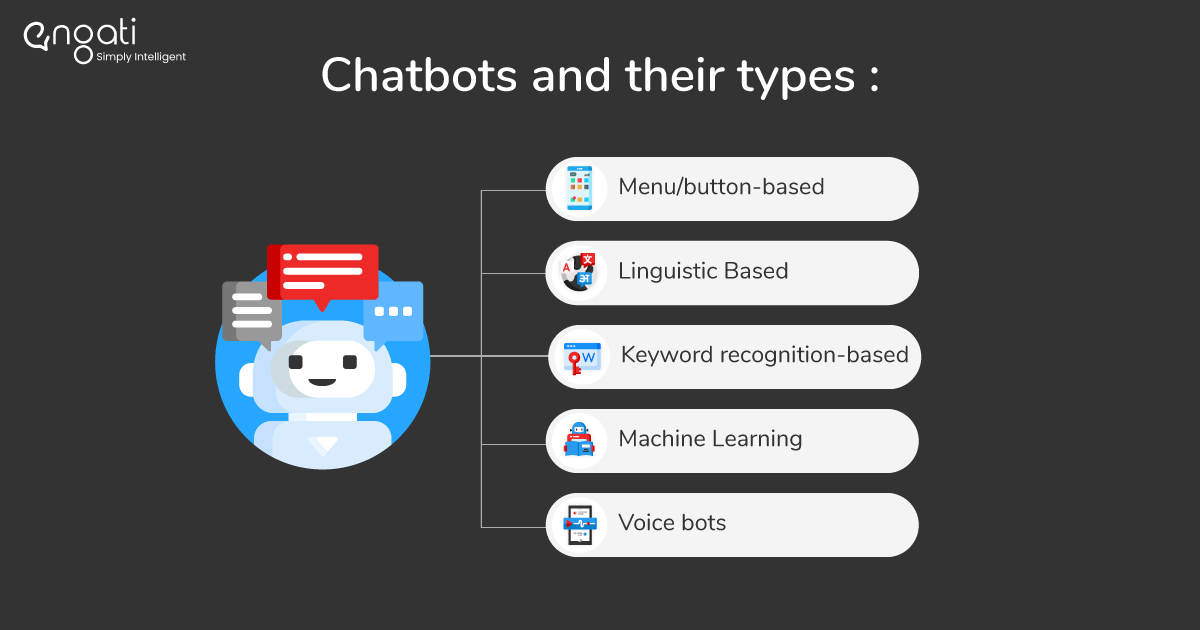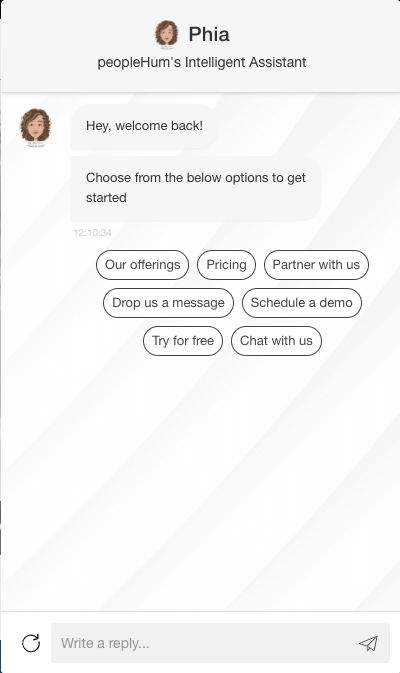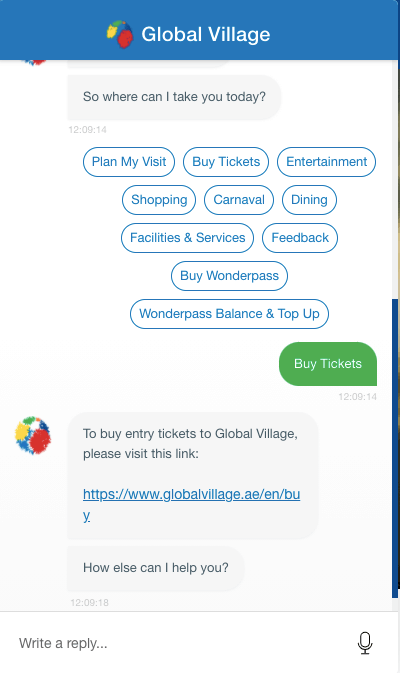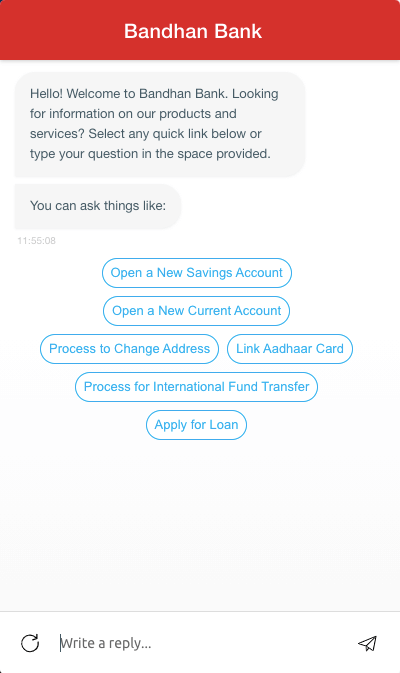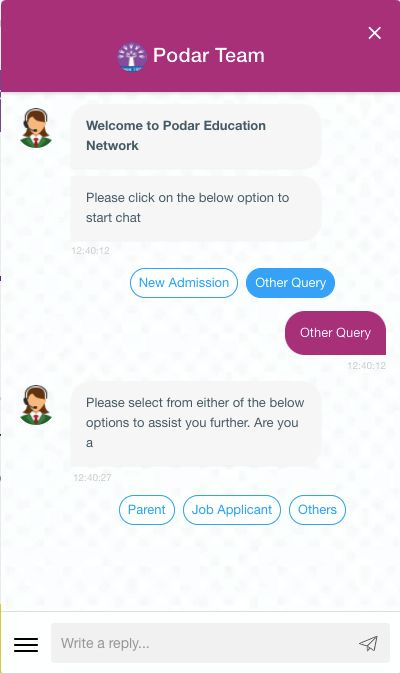The 6 types of chatbots - Which one do you need?
types of chatbot
Many types of AI chatbots are seen everywhere today. Across many variants of businesses and enterprises. But have you ever noticed that no two chatbots are the same? Their purpose, functions, dialogue flow, the tasks they take care of, are all completely different! Why is it so? Because different business types have different requirements and needs that the chatbot has to fulfill. Nevertheless, if you think all chatbots are created equally, you’re unfortunately mistaken!
A chatbot on an E-commerce website would be totally unlike the one for Banking. Just how we contrast in our personality and talents, the same goes for chatbots in their appearance and activities!
In this blog, we’ll be touching upon what are the different types of AI chatbots, the different types of business chatbots, trends in chatbots, and their applications and their functionalities. This will give you a clear understanding of the different types of chatbot technology and what would be the ideal chatbot type for your business!
Here are the types of chatbots
Menu/button-based chatbots
Menu/button-based chatbots are the most basic type of chatbots on the market today. In most cases, these chatbots are glorified decision tree hierarchies presented to the user in the form of buttons. Similar to the automated phone menus we all interact with on almost a daily basis, these chatbots require the user to make several selections to dig deeper towards the ultimate answer.
While these chatbots are sufficient for answering FAQs that makeup 80% of support queries; they fall well short in more advanced scenarios in which there are too many variables or too much knowledge at play to predict how users should get to specific answers with confidence. It’s also worth noting that menu/button-based chatbots are the slowest in terms of getting the user to their desired value.
Linguistic Based (Rule-Based Chatbots)
If you can predict the types of questions your customers may ask, a linguistic chatbot might be the solution for you. Linguistic or rules-based chatbots create conversational flows using if/then logic. First, you have to define the language conditions of your chatbots. Conditions can be created to assess the words, the order of the words, synonyms, and more. If the incoming query matches the conditions defined by your chatbot, your customers can receive the appropriate help in no-time.
However, it’s your job to ensure that each permutation and combination of each question is defined, otherwise, the chatbot will not understand your customer’s input. This is why a linguistic model, while incredibly common, can be slow to develop. These innovative chatbots demand rigidity and specificity. Now you can also use Component-Based Architecture In AngularJs Using UI-Router to make routing of chatbots much easier.
Keyword recognition-based chatbots
Unlike menu-based chatbots, keyword recognition-based chatbots can listen to what users type and respond appropriately. These chatbots have such a script that they utilize customizable keywords and an AI application - Natural Language Processing (NLP) to determine how to serve an appropriate response to the user.
These types of chatbots fall short when they have to answer a lot of similar questions. The chatbots will start to slip when there are keyword redundancies between several related questions.
It is quite popular to see chatbots that are a hybrid of keyword recognition-based and menu/button-based. These chatbots provide users with the choice to try to ask their question directly or use the chatbot’s menu buttons if the keyword recognition functionality is yielding poor results or the user requires some guidance to find their answer.
Machine Learning chatbots
Contextual chatbots are by far the most advanced of the three bots discussed previously. These types of chatbots utilize Machine Learning (ML) and ethical Artificial Intelligence (AI) to remember conversations with specific users to learn and grow over time. Unlike keyword recognition-based chatbots, contextual chatbots are smart enough to self-improve based on what users are asking for and how they are asking it.
For example, a contextual chatbot that allows users to order food, chatbot will store the data from each conversation and learn what the user likes to order. The result is that eventually when a user chats with this chatbot, it will remember their most common order, their delivery address, and their payment information and merely ask if they’d like to repeat this order. Instead of having to respond to several questions the user just has to answer with ‘Yes’ and the food is ready!
While this food ordering example is elementary, it is easy to see just how powerful conversation context can be when harnessed with AI and ML. The ultimate goal of any chatbot should be to provide an improved user experience over the alternative of the status quo. Leveraging conversation context is one of the best ways to shorten processes like these via a chatbot and overcoming challenges related to it.
The hybrid model
Businesses love the sophistication of AI-chatbots, but don’t always have the talents or the large volumes of data to support them. So, they opt for the hybrid model. The hybrid model offers the best of both words- the simplicity of the rules-based chatbots, with the complexity of the AI-bots.
Voice bots
To make conversational interfaces even more vernacular, businesses are now beginning to use voice-based chatbots or voice bots. Voice bots have been on the rise for the last couple of years, with Apple’s Siri, to Amazon’s Alexa, and why? Because of the convenience they bring. It’s much easier for a customer to speak rather than type. Voice bots bring frictionless experiences directly to the customer.
So, which type of chatbot is right for you?
While deciding if a business chatbot or WhatsApp chatbot is right for you, place yourself in the shoes of your users and think about the value they’re trying to receive. Is conversation context going to significantly impact this value? If not, then it is probably not worth the time and resources to implement at the moment.
Another thing to consider is your target user base and their UX preferences. Some users may prefer to have the chatbot guide them with visual menu buttons rather than an open-ended experience where they’re required to ask the chatbot questions directly. All the more reason to have users extensively test your chatbot before you fully commit and push it live.
The right chatbot platform is the one that best fits the value proposition you’re trying to convey to your users. In some cases, that could require enterprise-level AI capabilities; however, in other instances, simple menu buttons may be the perfect solution.
Understanding GIT is much easier, check out this Article more on it.
Popular chatbot use cases
1. Appointment scheduling or Booking bots
Appointment scheduling or booking bots are the kind of bots you usually find in the Healthcare, airline, and Hotel industries. These bots help customers book slots for appointments with the enterprise they communicate with.
Appointment bots or therapist chatbots are often linked to Google calendar, so when a customer books an appointment with you, it automatically gets stored in the calendar, creates an event, and sends reminders to both the customer and the business representative. The HR team also uses HR chatbots to schedule interviews for recruitment purposes.
So if you have a business that requires a lot of booking and scheduling, this bot serves the purpose! Some of the types of chatbots under this category of chatbots are-
HR Bot for scheduling meetings and interviews.
Healthcare Bot for booking appointments.
Travel Bot for flight bookings.
Hotel Booking Bot to book rooms and services.
Appointment Slot Booking can be integrated with any type of business.
Cinema Bot to book movie tickets.
Service Bots for automotive businesses. And so on…
2. Customer support chatbots
This must be the most popular use-case of chatbots! When someone says the word ‘chatbot’, the first thing to pop up in our mind is that one-time we spoke to a chatbot for customer care. These types of chatbots perform all tasks a customer support representative would do. And it does them real good!
Chatbot features such as 24/7 hour availability, quick and easy solutions, instant replies, and live chat facilities make chatbots the ideal tool to improve customer service. It not only improves communication between businesses and clients but also builds a rapport with them to earn customer loyalty. They also gather customer feedback and send it to your team so that you can work on the shortcomings.
They allow your customers to easily interact with your business through stimulating conversations and also play their part in increasing sales.
Some of the bot templates under this type of chatbots are-
Retail Support Bot handles queries related to your retail product line, you can also use this to sell your product directly from your chatbot.
Telecom Bot provides your customers the convenience of checking their bill, make a payment, recharge plans, change plans, change numbers, etc directly through the bot. It also procures any customer queries related to your service.
Techdesk Bot to help employees of an organization to connect to the internal technical support team for issues related to system and access to services/Applications. The bot also sends a confirmation to the customer through email.
The banking bot caters to your banking needs in an interactive manner. It provides account-related information, ongoing offers, helps you get an update on your checkbook, and also takes you to travel booking facilities.
Order issues help handle issues with food delivery orders.
3. Marketing and sales chatbots
Marketing and sales are the next most popular use-case of chatbots after customer support. So these intelligent marketing bots are able to personalize the customer experience, have a larger engagement capacity, reach a wider audience, analyze customer feedback and data, sends relevant notifications, and moves customers seamlessly through the sales funnel.
Some of the bot templates under this category are-
E-commerce bot to browse through products directly from the chatbot. You can send your customers images through carousels and link your website for purchases.
Education-course bot allows prospective students to browse through various course offerings by an educational institution. The chatbot also provides details on course fees, duration, and admission mode per course.
Automotive Lead Generation bot allows customers to get details on cars, features, prices, etc, along with booking service.
A real Estate bot can collect requirements from your customers on what they are looking for.
A Quiz bot for market research generates a quiz around the market research. It comes with attractive wallpaper and button color customizations. Saves the answers provided by the user, calculates their score, and also sends an email to the user letting them know their score.
Social media marketing bot is a lead generation chatbot template for social media marketing agencies. Which notify the admin whenever a new lead is generated.
Lead generation - Google helps you take user information and save it in google sheets. So the prospects who are already on your product have strong leads. So this bot will help you store that information which can be used to market products to these customers or provide support to convert these leads.
Lead generation with Salesforce helps you take user information and save it in Salesforce. Prospects already on your product are strong leads this bot will help you store that information which can be used to market products to these customers or provide customer support to convert these leads.
Here is the article on how can business pick the best support channels for their business.
4. Entertainment bots
Entertainment bots are made for entertainment and media purposes. These bots include-
The tv show guide is a simple yet powerful chatbot to help track channels as per category for a service provider.
The go-karting bot is an ideal chatbot template for booking go-karting services. The bot also shows some information about tracks and karts.
Quiz bot serves a quickfire round of questions to those interested in a little harmless fun dose of quiz questions. It ends with giving a quick score based on the correct answers.
Riddle bot engages your customers through games to keep them coming back to your website.
News and media bot helps users access news from different categories. So the bot flow leads the user to news categories where they can select the desired category to access news and can also subscribe to a category.
Cinema bot lets you book movie tickets, read reviews, browse through different genres.
The entertainment factor is a bot assisting you with everything at your favorite getaway location. Adding ease to your fun!
Youtube channel bot to deploy a chatbot using this template anywhere to use it as your new social media channel to share your youtube content.
The podcast helps the user learn about the universe with the help of podcasts or become a VIP member to get updates!
Also, take a look at this amazing list of blogs:
Insurance chatbot and its application
Arabic chatbot
Whitelabel chatbot
Facebook Messenger chatbot
These are just to name a few among the wide range of templates we offer! Register with Engati to build an ideal chatbot for your business and browse through 200 bot templates in the Bot Marketplace that caters to every business need of yours.
Also, to gain a little more insight into chatbot technology, read up on some of these blogs!
If you want to take a small sneak-peak into the tech industry, Check out the interesting interview of Shailendra Kumar giving us a tour about it on Engati CX.
Happy Botting!
This article about the “6 types of chatbot” was originally published on Engati blogs.

